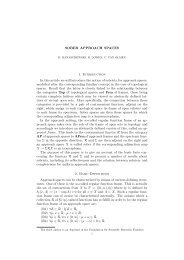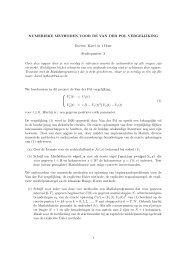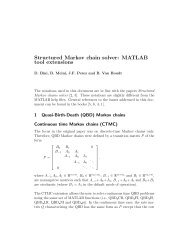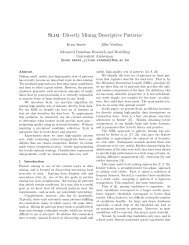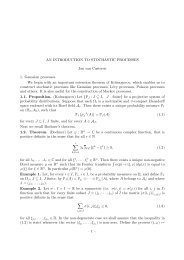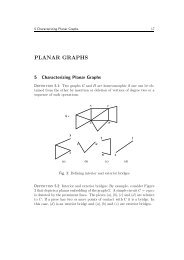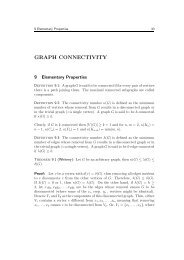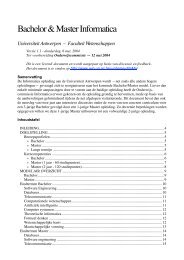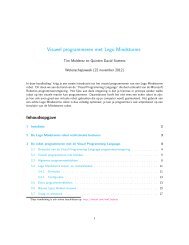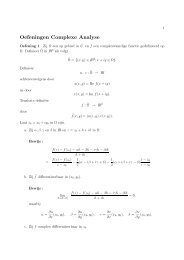Practical Rational Interpolation of Exact and Inexact Data Theory ...
Practical Rational Interpolation of Exact and Inexact Data Theory ...
Practical Rational Interpolation of Exact and Inexact Data Theory ...
You also want an ePaper? Increase the reach of your titles
YUMPU automatically turns print PDFs into web optimized ePapers that Google loves.
4 Introduction<br />
ues, but excluding the point at infinity, which is added in Chapter 4. Such<br />
a treatment is crucial for underst<strong>and</strong>ing the different aspects <strong>and</strong> possible<br />
degeneracies that are connected with the classical rational interpolation<br />
problem. Except for the straightforward method, no algorithm is given.<br />
In Chapter 2 a specific representation for interpolating rational functions<br />
is considered: the barycentric form. The barycentric form has a remarkable<br />
property which makes it attractive for numerical implementation, namely<br />
exact interpolation even in the presence <strong>of</strong> rounding errors. We review how<br />
classical rational interpolation fits into this representation <strong>and</strong> also present<br />
some other common uses <strong>of</strong> the barycentric formula. Then the numerical<br />
stability <strong>of</strong> the barycentric formula is considered. It turns out that, due to<br />
catastrophic cancellation, the evaluation <strong>of</strong> the barycentric form may give<br />
very inaccurate results when evaluated outside the interpolation interval.<br />
For the incorporation <strong>of</strong> asymptotic behavior (interpolation at infinity), this<br />
is unacceptable.<br />
For that reason we ab<strong>and</strong>on the barycentric form <strong>of</strong> the rational interpolant<br />
<strong>and</strong> turn to another representation in Chapter 3 <strong>and</strong> consider interpolating<br />
continued fractions. First, the construction <strong>of</strong> a Thiele continued<br />
fraction is given. Such a continued fraction is the basis for a more advanced<br />
algorithm due to Werner. Werner’s algorithm constructs a more general<br />
form <strong>of</strong> a Thiele continued fraction <strong>and</strong> also deals with degenerate situations.<br />
It is one <strong>of</strong> the few algorithms for rational interpolation for which a<br />
stability analysis exists. If a special pivoting strategy is incorporated, then<br />
it has even been proven to be backward stable [GM80]. Therefore it is a<br />
suitable algorithm for numerical implementation. With the pivoting strategy,<br />
it also allows for poles (vertical asymptotes) to be prescribed, but in<br />
its st<strong>and</strong>ard form, interpolation at infinity (including horizontal <strong>and</strong> oblique<br />
asymptotes) is not supported.<br />
In Chapter 4 the interpolation condition at infinity is added. First a<br />
condition to detect degeneracy for the point at infinity is given if the points<br />
are ordered such that all finite data come first <strong>and</strong> the point at infinity is<br />
last. For this ordering <strong>of</strong> the data, we show how the algorithm <strong>of</strong> Werner can<br />
be modified to interpolate also at infinity. An illustration <strong>of</strong> the usefulness<br />
<strong>of</strong> interpolation at infinity is given.<br />
In the last Chapter, we review other algorithms for rational interpolation<br />
which are more or less related to Werner’s algorithm. The more practical algorithms<br />
are most useful in a symbolic environment rather than a numerical<br />
one.<br />
The results in this part have been presented partially in [SCLV05, SCV08].



